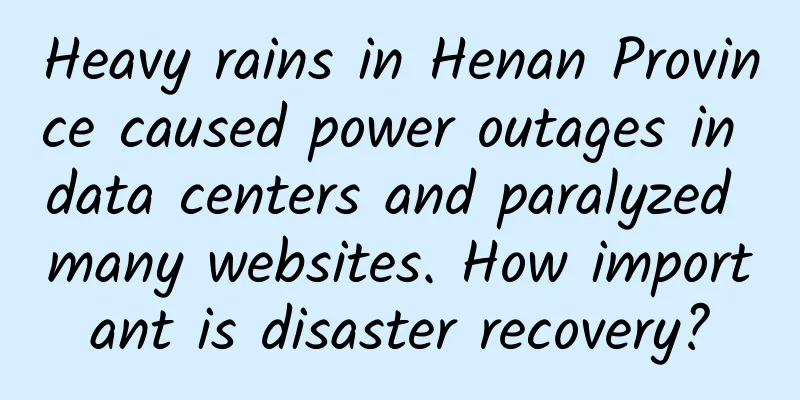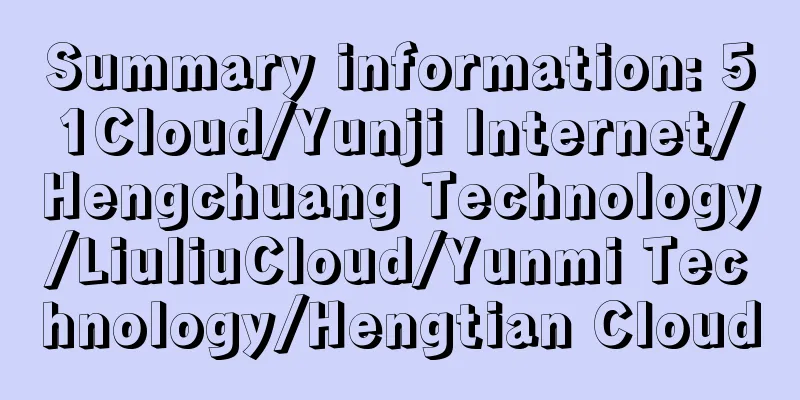In order to "force" users to switch to 5G, operators have come up with new moves?

|
Recently, the voice of "forcing" users to upgrade to 5G has been heard again. Is this a new operation of the operators? Recently, it was reported that the three major operators have completed the deployment of IMS network interconnection in the national mobile communication network and officially provided services to users. This has accelerated the transition of 2G and 3G users to 4G/5G, and the withdrawal of 2G/3G networks has accelerated. How are network decommissioning and frequency clearing related to "forcing" users to switch to 5G? The only possible reason is that once 2/3G networks are decommissioned, 2/3G mobile phones will inevitably become unusable. Who will be 3G users in 2021? Of course, only the elderly, so the operator's operation is to force the elderly to switch to 5G mobile phones. By the way, China Unicom announced its plan to withdraw from the network as early as the end of last year, so it was criticized the most. Users accused China Unicom of doing everything it could to promote the development of 5G. Until March this year, when the chairman of China Unicom reiterated the strategy of accelerating the withdrawal of 2G network at the performance conference, the outside world still "criticized" it. Although I don't know who first made this statement, isn't it too blunt to link the causal relationship between withdrawing 2G and 3G networks and forcing users to upgrade to 5G? 2G/3G networks are being phased out around the worldLet's first look at a data chart from GSMA. It is not difficult to find that operators around the world are taking actions to withdraw from the network and clear the frequency, but the methods are different. For example, European operators adopt the approach of shutting down the 3G network first, while the Americas are more willing to shut down the 2G network first. According to the editor, as early as 2008, Japanese telecom operators had already withdrawn from the 2G network, and then operators in South Korea, New Zealand, Thailand, Canada, Australia, North America and other countries also withdrew from the 2G network. This at least shows that the withdrawal of the network itself is necessary. In the global ranking of 2G and 3G withdrawal trends, China is one of the last countries. Quitting the Internet is a win-win situationThis is naturally the most beneficial for operators. A large number of 2G and 3G network base stations account for a large amount of capital expenditure and operating costs of operators. This money can actually be used to expand 4G and deploy 5G, which can also improve cost-effectiveness and accelerate the construction of 5G. After all, the power consumption of 5G is very alarming. However, this does not mean that operators will "force users to upgrade to 5G". For users, after decommissioning and clearing 2G and 3G networks, operators can directly optimize the performance of 4G and 5G. Once the speed of these two generations of networks is increased, the vast majority of domestic users will benefit. As for the package charges, it is true that operators have removed many low-priced 4G packages, but there are far more cheap 4G packages than those removed by operators. There are still many very cheap 4G packages left (the 4G packages used by the editor’s two cards have not changed), and at the same time, the prices of 5G packages have also plummeted. Operators save costs and users experience better network speeds. Why not consider the withdrawal of 2G and 3G networks as a win-win situation? Don't think that the elderly are too outdated2. The biggest impact of 3G network withdrawal is of course on the elderly, which is true. However, it is already 2021, and the mobile entertainment needs of young people may not necessarily become the mobile entertainment needs of the elderly. Take two platforms: Douyin and Kuaishou, for example, short videos are also pleasing the elderly. The 2020 Senior Internet Life Report shows that 0.19% of seniors spend more than 10 hours online per day on some apps, and more than 100,000 seniors live on mobile networks almost 24/7. The average daily usage time for senior users over 60 years old is 64.8 minutes, and each senior user logs into the app 5 times a day on average. For the elderly who are too old to understand the functions of smartphones, mobile phone manufacturers have already launched 4G senior phones, which are priced in the three-digit range and can be perfectly adapted to WeChat and QQ. Can we still say that the withdrawal of the network is to force users to upgrade to 5G? Let's talk about the three companies' desire to survive in terms of network withdrawal. In order to appease users, some of them have launched mobile phone replacement activities, and some have provided free network upgrade services. Last year, Shandong Unicom clearly stated in some cities that 2G users can go to the business hall to receive a 4G smartphone and a free data package. In summary, what do you think about the fact that 2G and 3G networks are about to be phased out? |
<<: The core technical principles behind DingTalk document collaborative editing
>>: Outstanding Network Virtualization Solutions in 2021
Recommend
Here is a list of RackNerd's cheap promotional packages, starting from $9.89 per year
RackNerd has a certain position among low-cost VP...
MIIT releases 5G spectrum planning, China launches mid-band 5G commercialization
On November 15, the Ministry of Industry and Info...
The U.S. "Officialdom Exposed" in the ZTE Incident
The much-watched ZTE ban incident has experienced...
RAKsmart: Japan/Korea servers starting from $59/month, high-defense servers starting from $79/month, 1~40G large bandwidth servers, etc.
Earlier this month, I shared the promotional VPS/...
Friendhosting's new Romania VPS starts from 2.99 euros per month, 25% off down payment
Friendhosting has sent out an email about a new n...
Environment construction: VS2019+MSVC compile Dfu-Util
[[414597]] This article is reprinted from the WeC...
CUBECLOUD VPS 12% off, Hong Kong/Los Angeles CN2 GIA monthly payment starts from 60 yuan
CUBECLOUD has released a promotion during the 618...
8 predictions for the development of network technology in 2017
The Internet is evolving at an unprecedented pace...
The data center is dying? Not really
Today, despite the greater adoption and growth of...
Is there many obstacles in the development of the Internet of Things? A brief discussion on the pain points of IOT development
In modern society, the Internet of Things, which ...
How to choose IoT communication technology
Communication technology, as a basic technology, ...
AWS now integrates F5 distributed cloud bot defense to help enterprises effectively deal with complex robot attacks
F5 (NASDAQ: FFIV) today announced that F5 Distrib...
WiFi roaming is seriously lagging. How to effectively improve it and achieve seamless roaming?
User satisfaction with Wi-Fi depends in part on w...
6 SD-WAN trends to watch in 2020
SD-WAN reached a new inflection point in 2019. Du...
Google Fiber: 5 Gbps and 8 Gbps services coming early next year
Google Fiber will launch symmetrical 5Gbps and 8G...









